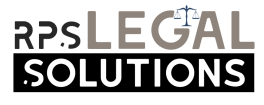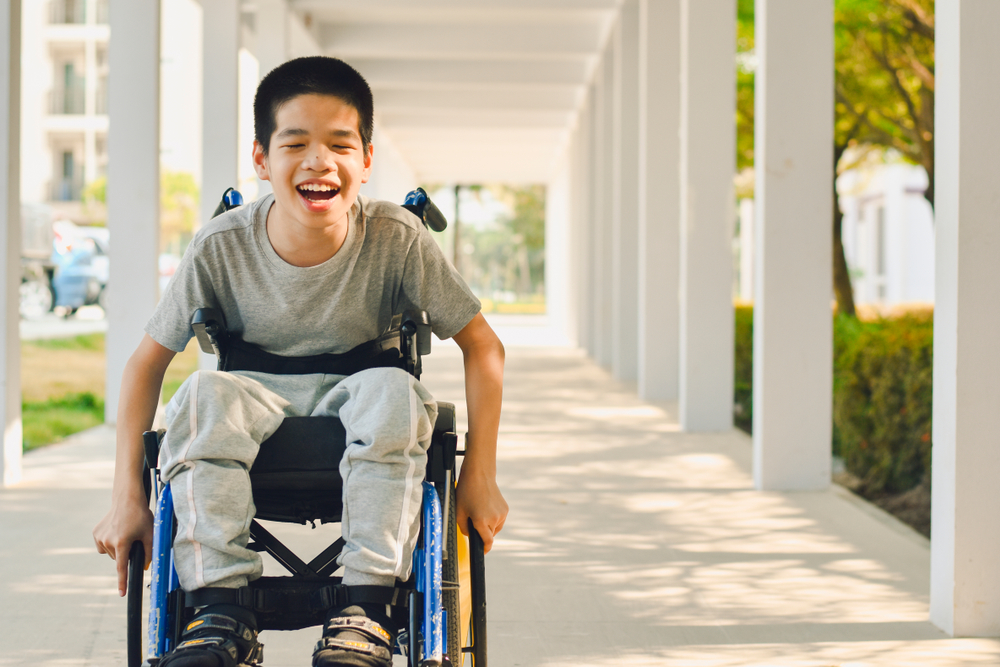Understanding Birth Injuries and Their Impact on Learning
Defining Birth Injuries
Birth injuries refer to any harm that a baby sustains during the birthing process. These injuries can range from mild, such as minor bruising, to severe, like nerve damage or brain injury. The causes of birth injuries are varied and can include factors such as prolonged labor, premature birth, or medical negligence.
- Types of Birth Injuries: Some common types include cerebral palsy, Erb’s palsy, and fractures.
- Causes: These may involve complications during delivery, genetic conditions, or lack of oxygen to the baby’s brain.
- Treatments: Depending on the severity, treatments can range from physical therapy to surgical interventions.
- Legal Aspects: Families may seek legal counsel to understand their rights and potential compensation.
- Resources: Various organizations provide support and information to families dealing with birth injuries.
Understanding the nature and consequences of birth injuries is crucial for parents and educators. It allows them to identify the specific needs of the child and to seek appropriate educational accommodations and medical care.
Long-Term Educational Challenges
Children who have sustained birth injuries often face a myriad of long-term educational challenges. These challenges can vary widely depending on the nature and severity of the injury. Some of the common difficulties include:
- Cognitive delays that impact learning and information processing.
- Physical disabilities requiring special accommodations in the classroom.
- Behavioral issues that can arise from frustration or communication barriers.
Early special education interventions and social support are crucial for children with developmental delays. These interventions can help mitigate some of the educational challenges by providing tailored learning strategies and environments conducive to the child’s needs. Additionally, seeking legal help for preventable birth injuries can provide justice and compensation for better care. This financial support can be instrumental in accessing specialized therapies and educational resources that may otherwise be unaffordable for families.
The Psychological Effects on Affected Children
Children with birth injuries often face a unique set of psychological challenges that can influence their educational experiences. The emotional toll of coping with physical limitations or learning difficulties can manifest in various ways, from decreased self-esteem to heightened anxiety or depression.
- Self-Esteem Issues: Struggling with tasks that seem easy for peers can lead to feelings of inadequacy and low self-worth.
- Social Isolation: Physical or cognitive differences may result in social barriers, leaving children feeling isolated from their classmates.
- Anxiety and Depression: The stress of managing a disability and the pressure to perform academically can contribute to mental health issues.
It is crucial for educators and parents to recognize these psychological effects and provide a supportive environment that fosters resilience and positive self-image. Interventions such as counseling, peer support groups, and social skills training can be instrumental in helping children navigate these emotional challenges. By addressing the psychological impact of birth injuries, we can help ensure that affected children are not only accommodated in the classroom but also empowered to thrive emotionally and socially.
Legal Framework and Educational Rights
Federal and State Education Laws
The landscape of educational rights for children with birth injuries is shaped by a complex tapestry of federal and state laws. At the federal level, key statutes such as the Individuals with Disabilities Education Act (IDEA) ensure that children with disabilities have the right to a Free Appropriate Public Education (FAPE) in the least restrictive environment. This act mandates that public schools create an Individualized Education Program (IEP) for each eligible child with a disability, tailored to their specific needs.
State laws complement federal regulations and can vary significantly from one jurisdiction to another, offering additional protections or resources. It is crucial for parents and caregivers to familiarize themselves with the laws applicable in their state to fully advocate for their child’s educational rights.
Understanding these laws is not only about securing educational resources but also about seeking justice and support through legal channels when necessary. For instance, birth injury lawsuits can be a critical avenue for families seeking compensation due to medical malpractice. Such legal action can be instrumental in covering the costs of treatment and ensuring that those responsible are held accountable.
Individualized Education Program (IEP) and 504 Plans
Children with birth injuries may require special accommodations to succeed in an educational setting. Two critical tools designed to support these children are the Individualized Education Program (IEP) and 504 Plans. An IEP is a document developed for each public school child who needs special education. It is created through a team effort and reviewed periodically, ensuring the child’s unique needs are met.
A 504 Plan, on the other hand, is developed to ensure that a child who has a disability identified under the law and is attending an elementary or secondary educational institution receives accommodations that will ensure their academic success and access to the learning environment. Unlike an IEP, a 504 Plan does not require a child to qualify for special education services.
To effectively utilize these plans, parents and caregivers should:
- Understand the eligibility criteria and differences between an IEP and a 504 Plan.
- Participate actively in the assessment and planning process.
- Communicate regularly with educators and support staff to monitor progress.
- Advocate for adjustments to the plan as the child’s needs evolve over time.
Advocating for Your Child’s Legal Rights
Advocating for a child’s legal rights in the educational system is a critical step for parents and caregivers of children with birth injuries. It begins with a thorough understanding of the laws that protect these children, such as the Individuals with Disabilities Education Act (IDEA) and the Americans with Disabilities Act (ADA).
Parents should take proactive measures to ensure their child’s needs are met:
- Educate Yourself: Learn about your child’s rights and the responsibilities of schools under the law.
- Documentation: Keep detailed records of your child’s medical history, educational assessments, and any correspondence with educational institutions.
- Collaboration: Work closely with your child’s educators, therapists, and medical professionals to develop a comprehensive plan.
- IEP Meetings: Attend and actively participate in Individualized Education Program meetings to advocate for appropriate accommodations and services.
When necessary, parents may also seek the assistance of special education advocates or attorneys who specialize in educational law. These professionals can provide guidance, help navigate complex legal processes, and represent the child’s interests in disputes or mediation sessions. Remember, effective advocacy is rooted in collaboration, persistence, and a deep commitment to securing the best possible educational outcomes for your child.
Navigating the Educational System
Building a Support Team
Creating a robust support team is crucial for navigating the educational challenges that children with birth injuries face. This team should include a variety of professionals who can offer their expertise and guidance throughout the child’s educational journey.
- Medical Professionals: Pediatricians and specialists, such as those found on the Boston Children’s website, provide essential health-related insights and can help tailor educational plans to accommodate medical needs.
- Educational Advocates: Experts in education law can assist in understanding and exercising the child’s legal rights.
- Therapists and Counselors: These individuals address the psychological and developmental needs of the child, ensuring a holistic approach to education.
- Teachers and Special Educators: They are on the front lines, implementing the educational strategies that cater to the child’s unique learning requirements.
By bringing together these diverse perspectives, parents and caregivers can form a comprehensive support system that promotes the child’s academic success and overall well-being.
Effective Communication with Educators
Effective communication with educators is a cornerstone of educational advocacy for children with birth injuries. It involves establishing a collaborative relationship where parents and teachers work together to support the child’s learning needs. Here are some key strategies for fostering this vital communication:
- Be Proactive: Initiate regular discussions with teachers and support staff to stay informed about your child’s progress and any challenges they may face.
- Set Clear Goals: Work with educators to set realistic, achievable goals for your child’s education plan, ensuring that everyone is on the same page.
- Listen Actively: When engaging with educators, practice active listening to understand their perspective and the insights they have about your child’s abilities and needs.
- Share Information: Provide teachers with comprehensive information about your child’s birth injury and how it affects their learning, which can help tailor educational strategies.
- Seek Feedback: Encourage educators to share their observations and feedback regularly, which can be invaluable in adjusting educational approaches.
By maintaining open lines of communication, parents can better navigate the educational system and advocate for the necessary accommodations and resources that will aid their child’s academic journey.
Utilizing School Resources and Services
Maximizing the benefits of school resources and services is crucial for children with birth injuries. Parents and caregivers should begin by familiarizing themselves with the available support within the educational institution. This often includes access to specialized therapists, such as occupational, speech, and physical therapists, who play a vital role in addressing the specific needs of the child.
To effectively utilize these services, consider the following steps:
- Schedule a meeting with the school’s special education coordinator to discuss your child’s needs and the resources available.
- Inquire about the process for integrating these services into your child’s Individualized Education Program (IEP) or 504 Plan.
- Regularly communicate with service providers to monitor progress and make necessary adjustments.
It’s also important to explore external resources that can complement the school’s efforts. Organizations like ABC Law Centers can provide additional support, particularly in understanding legal rights and pursuing necessary accommodations. They specialize in birth injury cases and offer free case reviews, ensuring that families are well-informed and prepared to advocate for their child’s educational journey.
Community and Financial Resources for Families
Local and National Support Organizations
Families navigating the aftermath of birth injuries are not alone. Across the country, numerous organizations exist to support children with special needs and their families. These entities provide a wealth of resources, ranging from emotional support to practical guidance on educational advocacy.
- March of Dimes is a beacon of hope for many families. This organization is dedicated to fighting for the health of all moms and babies. They offer comprehensive information on pregnancy, birth defects, and the critical early years of a child’s life.
- National and local support groups often focus on specific types of birth injuries or developmental challenges. They can be invaluable in connecting families with similar experiences, providing a platform for sharing strategies and encouragement.
- Educational advocacy groups work tirelessly to ensure that children with birth injuries receive the educational accommodations they need. They offer training for parents on navigating the legal and educational systems, and can assist in the development of Individualized Education Programs (IEP).
These organizations not only offer support but also empower families to advocate for their children’s rights and well-being. Engaging with these groups can provide a sense of community and shared purpose that is vital during challenging times.
Grants and Scholarships for Special Needs Education
Securing financial assistance for children with birth injuries is crucial to accessing quality education tailored to their needs. A variety of grants and scholarships are available specifically designed to alleviate the financial burden on families and ensure that these children receive the appropriate educational opportunities.
- Grants often come from government sources, non-profit organizations, or private foundations. They may cover a wide range of expenses, from adaptive equipment to tuition for special education services.
- Scholarships are typically merit-based or need-based and can be provided by educational institutions, charitable foundations, or community groups. These funds are intended to support the child’s educational journey, from early intervention programs to college tuition.
Parents and caregivers are encouraged to research and apply for these financial resources early, as some may have limited funds or specific deadlines. It’s also beneficial to consult with educational advocates or financial aid counselors who specialize in special needs education to navigate the application process effectively.
Fundraising and Community Engagement
Engaging with the community and organizing fundraising events are vital strategies for families to support children with birth injuries. These initiatives not only raise necessary funds for specialized educational resources but also increase public awareness about the challenges these children face.
- Community Events: Hosting local events such as charity runs, bake sales, or auctions can galvanize community support and foster a sense of solidarity.
- Online Campaigns: Utilizing social media platforms and crowdfunding websites can reach a wider audience and facilitate donations from those who cannot attend in-person events.
- Partnerships with Businesses: Collaborating with local businesses for sponsorship or matching donation programs can amplify fundraising efforts.
It is important for families to communicate their child’s story compellingly and transparently to inspire community involvement. Moreover, maintaining a network of supporters ensures a sustainable flow of assistance and creates a supportive environment for the child’s educational journey.
Empowering Parents and Caregivers
Educational Workshops and Training
Parents and caregivers play a pivotal role in the educational journey of children with birth injuries. To equip them with the necessary skills and knowledge, educational workshops and training sessions are invaluable. These programs are designed to provide a comprehensive understanding of the child’s rights, the educational system, and effective advocacy techniques.
Key components of these workshops often include:
- An overview of the special education process and relevant laws.
- Strategies for effective communication with school personnel and other professionals.
- Guidance on how to read and understand educational and medical documents.
- Training on how to participate in and contribute to Individualized Education Program (IEP) meetings.
By attending these workshops, parents and caregivers can become more confident and informed advocates for their children. The knowledge gained empowers them to make well-informed decisions and to collaborate more effectively with educators and therapists. Ultimately, these training sessions aim to foster a supportive learning environment that accommodates the unique needs of each child.
Peer Support Networks
Navigating the complexities of the educational system for children with birth injuries can be a daunting task for parents and caregivers. Peer support networks provide a valuable platform for sharing experiences, resources, and emotional support. These networks often consist of other families who have faced similar challenges and can offer insights and advice based on their own journeys.
- Exchange of Information: Parents can learn about effective advocacy strategies and educational resources that have worked for others.
- Emotional Support: Engaging with peers who understand the unique pressures and challenges can be incredibly comforting.
- Community Building: These networks help in building a sense of community and belonging, which is crucial for both parents and children.
Participation in peer support networks can empower parents to become more effective advocates for their children’s educational needs. By connecting with others, they can also discover new coping mechanisms and resilience strategies, ensuring they remain strong and focused on their child’s development and well-being.
Self-Care and Resilience Strategies
Caring for a child with birth injuries is a marathon, not a sprint. Parents and caregivers must prioritize their well-being to sustain the long-term advocacy and support their child requires. Self-care is an essential component of effective parenting, particularly when navigating the complexities of special education. It involves recognizing personal needs and taking steps to meet them, which can lead to improved mental and emotional health.
- Establish a Routine: Incorporate regular self-care activities into your daily schedule. This could include exercise, meditation, or simply quiet time to decompress.
- Seek Support: Connect with other parents and caregivers who understand the unique challenges you face. Peer support networks can provide emotional support and practical advice.
- Set Boundaries: Learn to say no to additional responsibilities that may compromise your ability to care for yourself and your child.
By implementing these strategies, parents and caregivers can build resilience, enabling them to better cope with stress and advocate effectively for their child’s educational needs. Remember, taking care of yourself is not an act of selfishness; it is a necessary strategy for maintaining the stamina required to be an educational advocate for your child.






